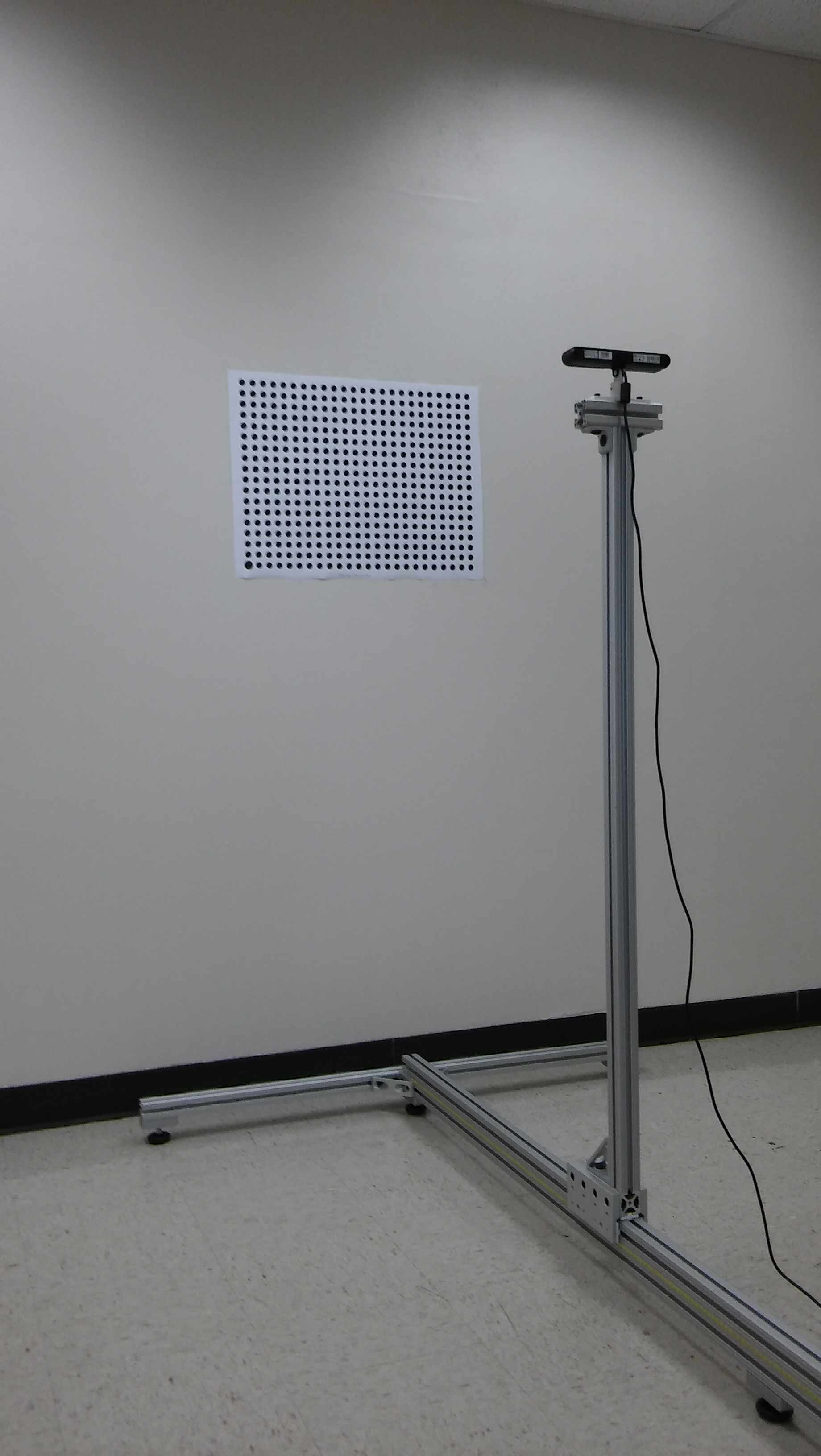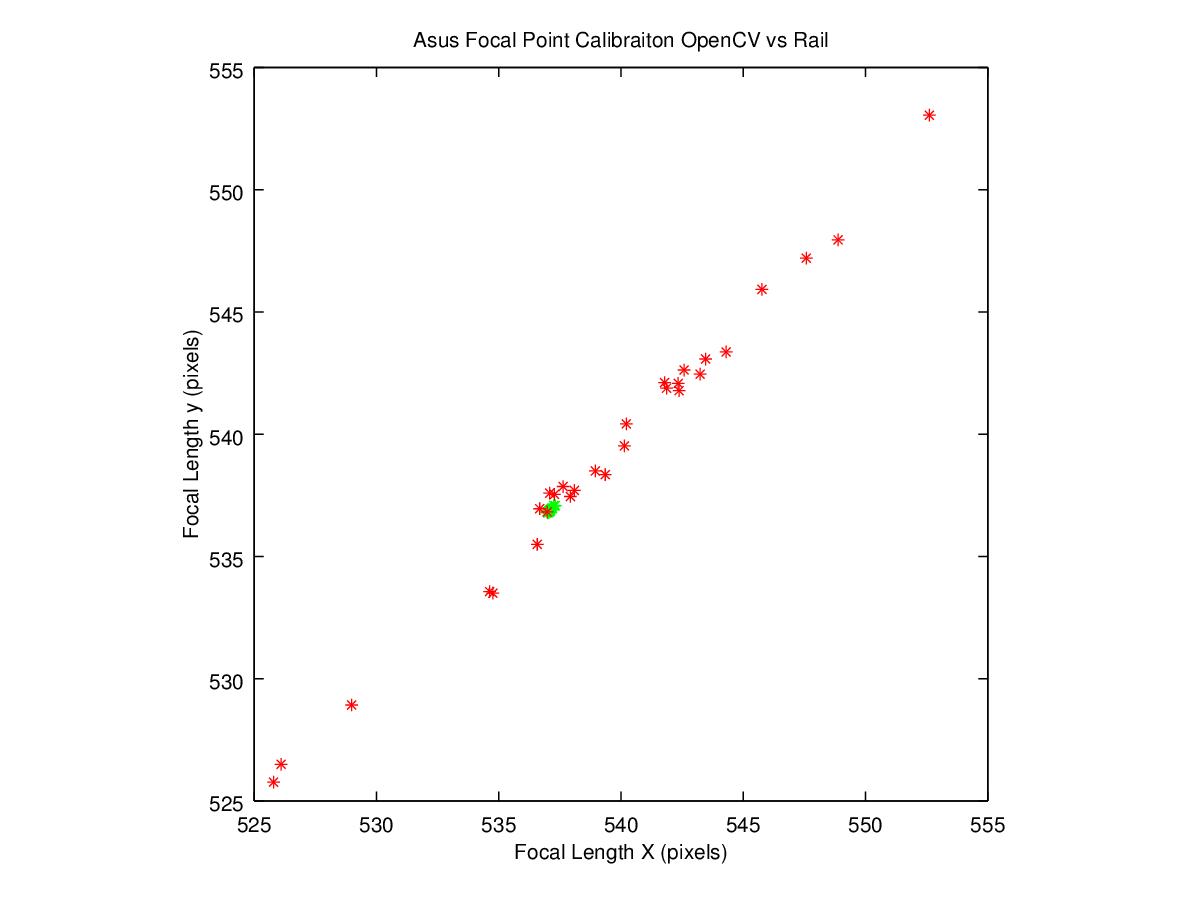|
EXPERIMENTAL: This status indicates that this software is experimental code at best. There are known issues and missing functionality. The APIs are completely unstable and likely to change. Use in production systems is not recommended. All code starts at this level. For more information see the ROS-Industrial software status page. |
Overview
This package provides for camera intrinsic calibration. The camera intrinsics such as focal length, center point, and distortion parameters, are important if the camera position (extrinsic calibration) is to be determined with a high degree of accuracy. Incorrect camera intrinsics can lead to improper extrinsic calibration which can result in poor process results.
The procedure uses a slightly different cost function than OpenCV and Matlab. It relies on knowing the distance the camera is moved between successive images. When performed precisely, the routine is both quicker because it requires fewer images and more accurate because the parameters have lower co-variance. In order to run the calibration, you will need a linear rail or guide in order to precisely position the camera prior to taking each image

Motivation
While a camera_calibration method does already exist, for some industrial and high precision applications, the results may not be sufficient. Depending on the number and quality of the images collected by the user, the calibration method can result in widely varying focal length values.

A 1-2% error in the focal length calculation could lead to a position error of ~2cm or more. Such position error could lead to problems if the robotic system is not designed to compensate for the error. Grippers could miss grasping parts or run into the part they are trying to grab.
Technical Notes/Definitions
Error per observation: The industrial calibration package utilizes the Ceres solver to collect all the image observations and optimize the camera parameters (intrinsic or extrinsic) to minimize the error. For the intrinsic calibration package, an observation is a single circle found in the calibration target. So for a single image of an 18x24 grid calibration target, there are 432 observations made, and 4320 observations made for a series of 10 images. After optimization, the total error is then divided by the number of observations in order to obtain the average error per observation. This is the measure of how accurately the algorithm was in finding the target location. Since the target location in the image is measured in pixels, then the error units is also in pixels. Thus, an average error per observation of 1 pixel indicates that final solution was able to find the actual target location with an accuracy of 1 pixel. When performed correctly, all calibration attempts should result in less than 1 pixel of error.
Convergence to a solution that has a low error, however, does not mean that the final result is correct. If too few images are provided, or the images are not diverse enough (based upon the calibration routine being executed), then the algorithm could converge to the wrong solution. To ensure accurate results, follow the tutorial instructions and any validation procedure provided.
Tutorials
Examples can be found in the tutorials section.

Software_Status(2f)Experimental/1Column.png)